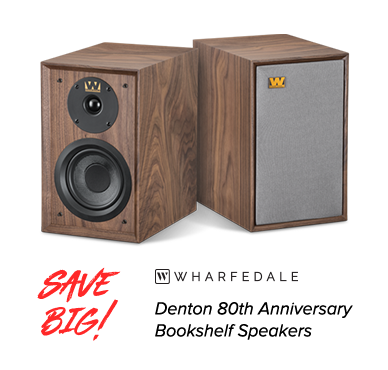Happy birthday, Wayne Shorter. The legendary saxophonist, whose career not only spans decades but multiple styles and incarnations, turns 85 on August 25. And he isn't slowing down. Shorter, who has seemingly collaborated with every modern jazz figure who matters, will this year become a Kennedy Center honoree and, on September 14, issue his expansive new project Emanon – a triple album accompanied with a graphic novel. Those who know Shorter are likely aware of his comic fandom, as his office famously has action figures stacked next to Grammy Awards (he's won 10). While we're eager to explore the orchestral-enhanced Emanon next month, for now, in honor of the star's birthday, we look back at five standout albums from a career worthy of a superhero.
Wayne Shorter, Speak No Evil
Shorter was operating at an unbelievably prolific rate in the mid 60s. In addition to his solo work, the artist remained active in Miles Davis' band and in 1964 alone, recorded three works still considered among his strongest: Night Dreamer, Juju, and Speak No Evil. All possess vastly different tones. The warm Night Dreamer contrasts with the bolder, beefier playing on Juju while Speak No Evil feels almost playful and spritely by comparison. Speak No Evil, in particular, emphasizes Shorter's ability to tinker and experiment with exquisite harmonies while saying no more with his instrument than necessary. Not surprisingly, Speak No Evil – featuring Herbie Hancock on piano, Ron Carter on bass, drummer Elvin Jones, and trumpeter Freddie Hubbard – endures as his most famous effort from the period. Shorter sounds especially free on the whimsical "Witch Hunt" while "Fee-Fi-Fo-Fum" unfolds with larger-than-life confidence.
Freddie Hubbard, Ready for Freddie
Widely regarded as the most gifted trumpeter of the post-bebop 60s and 70s, Hubbard often played with Shorter and on each other's albums (see Speak No Evil, above). This 1962 effort, recorded in 1961, brings out the best of both artists and helps illustrate some of their philosophies. While regularly compared to trumpet greats such as Davis, Hubbard often stated saxophonists were his biggest influence. "I find when you get around trumpet players, you get into competitive playing – who can play the loudest and the highest. After you develop your own style, you don't want to get into that," he said in the book Jazz-Rock Fusion: The People, the Music. Indeed, Ready for Freddie captures Hubbard and Shorter not just trading solos but snaking around one another, with Hubbard using his brass instrument for subtlety and Shorter showing the saxophone can be rather brash. It's not about one-upmanship. Each player has a conversation with the other by attempting to learn their colleague's language, resulting in an album that feels romantic and languid from start to finish.
Art Blakey & the Jazz Messengers, Buhaina's Delight
Amid the ever-shifting lineups of the Jazz Messengers, the group that composed this 1963 set is often considered the best, given it features a young Hubbard and Shorter, the latter of whom runs away with the show. Three of the album's six tracks are Shorter compositions, and they emphasize his gradual mastery of the hard-bop style. And from Shorter's opening "Backstage Sally," it's made clear these songs will serve the groove. Here, Shorter's sax runs staccato lines as if strutting the floor – cool jazz at its most relaxed. His "Reincarnation Blues" goes for more of a swing feel, but his ballad "Contemplation" comes on as the show-stopper. It all feels woozy and bluesy, as if everyone plays in slow motion. Blakey ultimately settles into a trot, giving space for a Shorter solo that epitomizes self-examination.
Weather Report, Weather Report
Shorter co-led this long-running jazz-rock-fusion act, but don't let the description frighten you. This is not noodling with electric bass tossed into the mix. Rather, Weather Report's 1971 self-titled debut, recorded not too long after anchors Shorter and pianist Joe Zawinul worked on Davis' Bitches Brew, often goes for the abstract – foreshadowing not only experimental jazz but the work of Brian Eno. As the record's oft-quoted introduction from label head Clive Davis states, consider it "a soundtrack for the mind, the imagination, for opening up heads and hearts." As if on cue, the slightly shifting electric keyboard-led soundscapes of "Milky Way" open the album like a sci-fi film, one that in each proceeding song seeks to explore different possibilities – be it the skittering, otherworldly sounds of "Umbrellas" or bass-heavy, dream-like hug of "Waterfall." And yet nothing will prepare you for "Orange Lady," a sexy, swampy, and spacey vamp that keeps all its temptations just out of arm's reach.
Miles Davis, E.S.P.
Shorter has come into contact with many a jazz great throughout his career, but his association with Davis must get its due. Showcasing the long-running quintet of Davis, Shorter, Carter, Hancock, and drummer Tony Williams, E.S.P. marks the famed trumpeter's first recorded collaboration with Shorter. And the latter's very playing that helps push the 1965 album toward its most adventurous side. In turn, E.S.P. feels perfectly balanced, a work built equally around improvisation and defined arrangements. On the largely democratic effort, Shorter composed two of the album's seven compositions, including the title track and "Iris." On the former, an incessantly urgent rhythm from Williams sees Shorter and Davis offer up anxious, fury-ridden notes. "Iris" claims a calmer backdrop, one in which Shorter's saxophone conveys passionate albeit edgy emotions.
24th Aug 2018




































